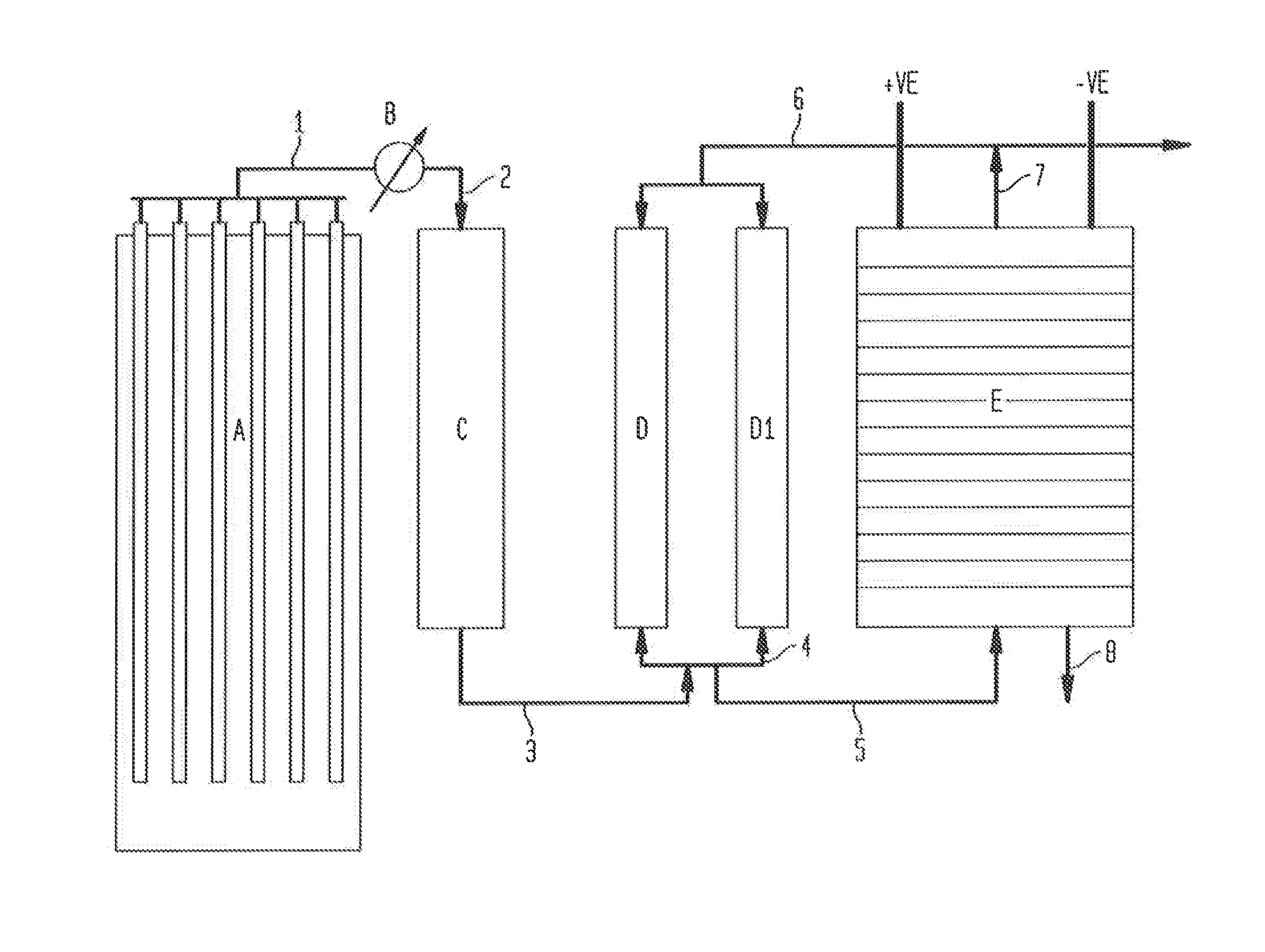Hydrogen production process with carbon dioxide recovery
- Summary
- Abstract
- Description
- Claims
- Application Information
AI Technical Summary
Benefits of technology
Problems solved by technology
Method used
Image
Examples
Embodiment Construction
[0020]Turning to the FIGURE, there is shown a schematic representation of the process for separating hydrogen from the waste gas stream of a pressure swing adsorption system using an electrochemical cell.
[0021]A reformation unit A will produce a synthesis gas mixture. The reformation process will typically be a steam or a carbon dioxide (or a mixture of steam and CO2) reformation process whereby steam or carbon dioxide is fed along with a hydrocarbon such as methane. These reactants are reacted in the presence of a metal-based catalyst where they will form the synthesis gas mixture of hydrogen, carbon monoxide, carbon dioxide, unreacted methane and water, as well as trace constituents.
[0022]The synthesis gas mixture is fed through line 1 to a cooler B whereby the synthesis gas mixture is reduced in temperature from 700° to 900° C. to a temperature of ˜300° C. to near ambient. The cooled synthesis gas mixture is optionally fed through line 2 to a water gas shift reaction unit whereby...
PUM
 Login to View More
Login to View More Abstract
Description
Claims
Application Information
 Login to View More
Login to View More - R&D
- Intellectual Property
- Life Sciences
- Materials
- Tech Scout
- Unparalleled Data Quality
- Higher Quality Content
- 60% Fewer Hallucinations
Browse by: Latest US Patents, China's latest patents, Technical Efficacy Thesaurus, Application Domain, Technology Topic, Popular Technical Reports.
© 2025 PatSnap. All rights reserved.Legal|Privacy policy|Modern Slavery Act Transparency Statement|Sitemap|About US| Contact US: help@patsnap.com


